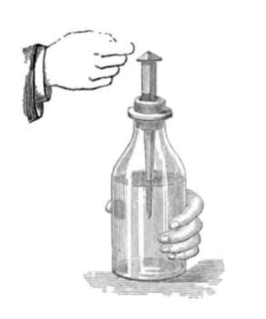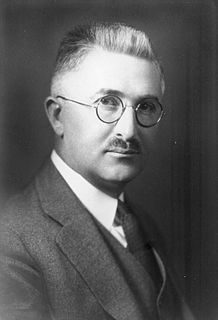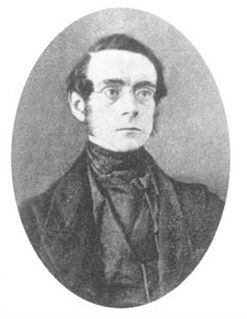This article includes a list of general references, but it lacks sufficient corresponding inline citations .(August 2020) |
W. R. Pidgeon developed the pidgeon machine, an electrostatic machine with a unique setup.[ clarification needed ]
This article includes a list of general references, but it lacks sufficient corresponding inline citations .(August 2020) |
W. R. Pidgeon developed the pidgeon machine, an electrostatic machine with a unique setup.[ clarification needed ]
Pidgeon presented his machine to the Physical Society after several years of investigation into influence machines (in the 1890s). The device was later reported in the Philosophical Magazine (December 1898, pg. 564) and the Electrical Review (Vol. XLV, pg. 748). Pidgeon machines possess fixed inductors arranged in a manner that increases the electrical induction effect (and it electrical output is at least double that of typical machines of this type [except when it is overtaxed]). The essential features of the Pidgeon machine are, one, the combination of the rotating support and the fixed support for inducing charge, and, two, the improved insulation of all parts of the machine (but more especially of the generator's carriers). Pidgeon machines are a combination of a Wimshurst machine and Voss machine, with special features adapted to reduce the amount of charge leakage. Pidgeon machines excite themselves more readily than the best of these types of machines. In addition, Pidgeon investigated higher current "triplex" section machines (or "double machines with a single central disk") with enclosed sectors (and would receive British Patent 22517 (1899) for this type of machine).

Electric charge is the physical property of matter that causes it to experience a force when placed in an electromagnetic field. Electric charge can be positive or negative. Like charges repel each other and unlike charges attract each other. An object with an absence of net charge is referred to as neutral. Early knowledge of how charged substances interact is now called classical electrodynamics, and is still accurate for problems that do not require consideration of quantum effects.

A Leyden jar is an electrical component which stores a high-voltage electric charge between electrical conductors on the inside and outside of a glass jar. It typically consists of a glass jar with metal foil cemented to the inside and the outside surfaces, and a metal terminal projecting vertically through the jar lid to make contact with the inner foil. It was the original form of the capacitor.

An incandescent light bulb, incandescent lamp or incandescent light globe is an electric light with a wire filament heated until it glows. The filament is enclosed in a glass bulb with a vacuum or inert gas to protect the filament from oxidation. Current is supplied to the filament by terminals or wires embedded in the glass. A bulb socket provides mechanical support and electrical connections.

A Van de Graaff generator is an electrostatic generator which uses a moving belt to accumulate electric charge on a hollow metal globe on the top of an insulated column, creating very high electric potentials. It produces very high voltage direct current (DC) electricity at low current levels. It was invented by American physicist Robert J. Van de Graaff in 1929. The potential difference achieved by modern Van de Graaff generators can be as much as 5 megavolts. A tabletop version can produce on the order of 100 kV and can store enough energy to produce visible electric sparks. Small Van de Graaff machines are produced for entertainment, and for physics education to teach electrostatics; larger ones are displayed in some science museums.

A bayonet is a knife, dagger, sword, or spike-shaped weapon designed to fit on the end of the muzzle of a rifle, musket or similar firearm, allowing it to be used as a spear-like weapon. From the 17th century to World War I, it was considered a primary weapon for infantry attacks. Today it is considered an ancillary weapon or a weapon of last resort.

Sir Joseph John Thomson was a British physicist and Nobel Laureate in Physics, credited with the discovery of the electron, the first subatomic particle to be discovered.

Ralph Vinton Lyon Hartley was an American electronics researcher. He invented the Hartley oscillator and the Hartley transform, and contributed to the foundations of information theory.
Timothy C. May, better known as Tim May was an American technical and political writer, and electronic engineer and senior scientist at Intel. May was also the founder of the crypto-anarchist movement. He retired from Intel in 1986 at age 35 and died of natural causes at his home on December 13, 2018 at age 66.

A magazine is an ammunition storage and feeding device for a repeating firearm, either integral within the gun or externally attached. The magazine functions by holding several cartridges within itself and sequentially pushing each one into a position where it may be readily loaded into the barrel chamber by the firearm's moving action. The detachable magazine is sometimes colloquially referred to as a "clip", although this is technically inaccurate since a clip is actually an accessory device used to help load ammunition into a magazine.

Tiberius Cavallo was an Italian physicist and natural philosopher. His interests included electricity, the development of scientific instruments, the nature of "airs", and ballooning. He became both a Member of the Royal Academy of Sciences in Naples, and a Fellow of the Royal Society of London in 1779. Between 1780 and 1792, he presented the Royal Society's Bakerian Lecture thirteen times in succession.

An electrostatic generator, or electrostatic machine, is an electrical generator that produces static electricity, or electricity at high voltage and low continuous current. The knowledge of static electricity dates back to the earliest civilizations, but for millennia it remained merely an interesting and mystifying phenomenon, without a theory to explain its behavior and often confused with magnetism. By the end of the 17th century, researchers had developed practical means of generating electricity by friction, but the development of electrostatic machines did not begin in earnest until the 18th century, when they became fundamental instruments in the studies about the new science of electricity.

Capacitors are manufactured in many forms, styles, lengths, girths, and from many materials. They all contain at least two electrical conductors separated by an insulating layer. Capacitors are widely used as parts of electrical circuits in many common electrical devices.

A homopolar generator is a DC electrical generator comprising an electrically conductive disc or cylinder rotating in a plane perpendicular to a uniform static magnetic field. A potential difference is created between the center of the disc and the rim with an electrical polarity that depends on the direction of rotation and the orientation of the field. It is also known as a unipolar generator, acyclic generator, disk dynamo, or Faraday disc. The voltage is typically low, on the order of a few volts in the case of small demonstration models, but large research generators can produce hundreds of volts, and some systems have multiple generators in series to produce an even larger voltage. They are unusual in that they can source tremendous electric current, some more than a million amperes, because the homopolar generator can be made to have very low internal resistance. Also, the homopolar generator is unique in that no other rotary electric machine can produce DC without using rectifiers or commutators.

James Wimshurst was an English inventor, engineer and shipwright. Though Wimshurst did not patent his machines and the various improvements that he made to them, his refinements to the electrostatic generator led to its becoming widely known as the Wimshurst machine.

The history of electromagnetic theory begins with ancient measures to understand atmospheric electricity, in particular lightning. People then had little understanding of electricity, and were unable to explain the phenomena. Scientific understanding into the nature of electricity grew throughout the eighteenth and nineteenth centuries through the work of researchers such as Coulomb, Ampère, Faraday and Maxwell.

A dynamo is an electrical generator that creates direct current using a commutator. Dynamos were the first electrical generators capable of delivering power for industry, and the foundation upon which many other later electric-power conversion devices were based, including the electric motor, the alternating-current alternator, and the rotary converter.

Abraham Bennet FRS was an English clergyman and physicist, the inventor of the gold-leaf electroscope and developer of an improved magnetometer. Though he was cited by Alessandro Volta as a key influence on his own work, Bennet's work was curtailed by the political turbulence of his time.

Golding Bird was a British medical doctor and a Fellow of the Royal College of Physicians. He became a great authority on kidney diseases and published a comprehensive paper on urinary deposits in 1844. He was also notable for his work in related sciences, especially the medical uses of electricity and electrochemistry. From 1836, he lectured at Guy's Hospital, a well-known teaching hospital in London and now part of King's College London, and published a popular textbook on science for medical students called Elements of Natural Philosophy.

A supercapacitor (SC), also called an ultracapacitor, is a high-capacity capacitor with a capacitance value much higher than other capacitors, but with lower voltage limits, that bridges the gap between electrolytic capacitors and rechargeable batteries. It typically stores 10 to 100 times more energy per unit volume or mass than electrolytic capacitors, can accept and deliver charge much faster than batteries, and tolerates many more charge and discharge cycles than rechargeable batteries.
This article needs additional or more specific categories .(August 2020) |